
The girls arrive at the makeshift cricket ground on their bicycles, a narrow file of white athletic uniforms breezing down a dirt track that cuts through lush wheat fields in India’s Punjab region. They wear their names and numbers on their backs, their hair tied in long, neat braids. The youngest is 9, the oldest 14.
It’s time for practice: a 3-kilometre run, a couple hours of batting, bowling and catching drills, and lots of giggles. Overseeing it all is Gulab Singh Shergill, a police officer by day, their manager, mentor and champion by evening. The girls, including his own daughter, all refer to him as “veera”, meaning elder brother in Punjabi.

Prematch festivities before the Gujarat Giants took on the Mumbai Indians in the Women’s Premier League. THE NEW YORK TIMES/Atul Loke
But there would be no team, no dream, without the women. When someone is struck by a ball — made of hard cork and leather — Mr Shergill’s mother, Harjeet Kaur, is there to offer comfort until the sobbing stops and the girl runs back to the pitch.
Mr Shergill’s wife, Kamaldeep Kaur, helps coordinate with the 20-odd families through the team’s WhatsApp group. His sister, Jasvir Kaur, acts as a physical therapist of sorts: tummy rubs and deep breaths for the 9-year-old who arrived for practice after overindulging at a wedding function, facedown stretches for the girl struggling with leg cramps.
For the girls, the daily routine is an escape from the boredom of village life. After each practice, they lie in a circle, their backs to the grass, their faces to the sky’s fading light. They close their eyes for two minutes of silent reflection.
It’s about a lot more than cricket.
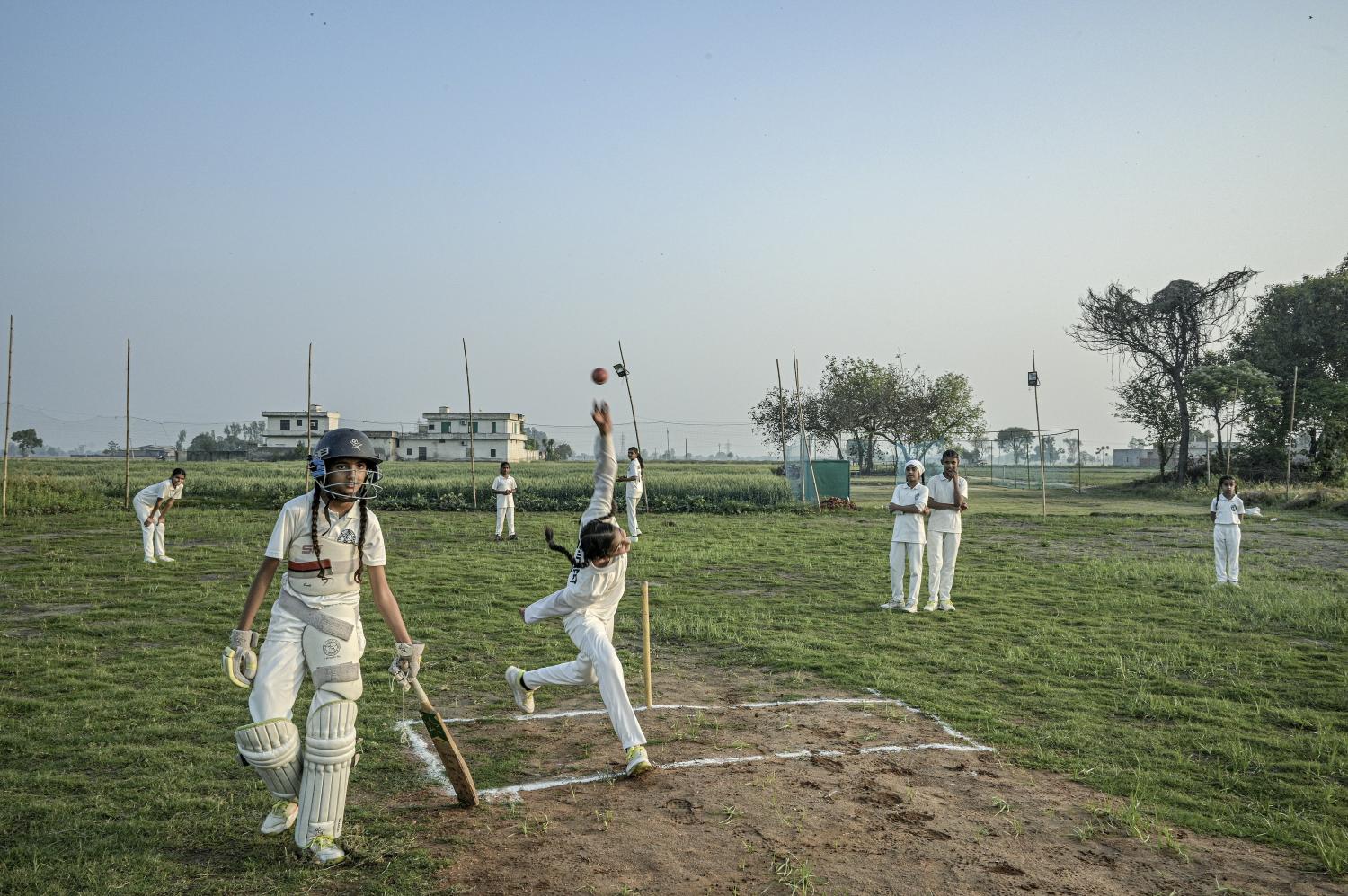
The team runs through bowling and batting drills during training. THE NEW YORK TIMES/Atul Loke
“What is the village life? You wake up at 5am, bake bread and prepare food and tea — all the housework is for the girls,” Mr Shergill tells them. “If you don’t become a player, you will be waking up early all your life until you are old. It will be marriage, and working for your husband, and then it will be for your children.”
And if they make it as professional players?
“You will have helpers,” he says with a smile. “You will pick up the phone, ring them, and they will bring you tea.”
If it ever felt as if Mr Shergill was selling a pipe dream, it now feels a bit less so.

The team takes on a 3.2km training run. photos: tul Loke/nyt
A remarkable thing happened this spring: A new Indian professional cricket league for women held its inaugural season, a more than US$500 million (17.1 billion baht) bet on female talent in what is by far the country’s most popular sport.
The women’s league is modelled on India’s hugely successful men’s professional cricket league, known as the Indian Premier League, featuring teams that are stocked mostly with Indian players but also include other top players from around the world. The two leagues make India the world’s foremost stage for professional cricket.
In just 15 years, the men’s Premier League has become one of the most valuable sports organisations on the planet. Teams bought for $100 million are now estimated to be worth $1 billion. The money flooding in has been used to improve infrastructure at the sport’s lower levels and groom younger players.
Now, wealthy investors see an opportunity in the Women’s Premier League, too, and are pouring in hundreds of millions of dollars. That means the kind of opportunities for female athletes that never existed before.
Opening up what has long been known as “the gentleman’s game” sends a powerful psychological message to hundreds of millions of women and girls in what will soon be the world’s most populous country.

Gulab Singh Shergill helps the girls fill out their paperwork before the selections at the cricket ground in Patiala, India. photos: Atul Loke/nyt
Gender roles remain rigid in India, where only about 20% of women are employed in the formal workforce, one of the lowest rates globally. If the country is to meet its full economic potential, it must chip away at that gender divide.
In the case of cricket, at least, some of India’s most famous industrialists — the Ambanis, the Adanis and others — are invested in ensuring that women thrive.
The five teams created for the inaugural season, which took place last month, were sold by the league for $570 million in total, or an average of about $110 million per franchise. Overnight, the league became the world’s second-most-valuable women’s sports association, after the WNBA.
The splashy debut got an enthusiastic reception among fans, even if it paled in comparison to the ferocious following for the men. Some of the matches drew as many as 35,000 people. Fifty million viewers in India tuned in during the league’s first week. Social media was filled with chatter and memes about the players.
“Everyone is a stakeholder now in making it successful,” said Nikhil Bardia, an executive at RISE Worldwide, a sports and entertainment agency, “in empowering the women ecosystem to have a lot more heroes.”
Inspiration
When the girls and their families in the village of Dharoki in Punjab turn on the TV these days, when they open Instagram or spread out a newspaper, they see it: roaring female cricket players, displaying the kind of joy and swagger long confined to men.
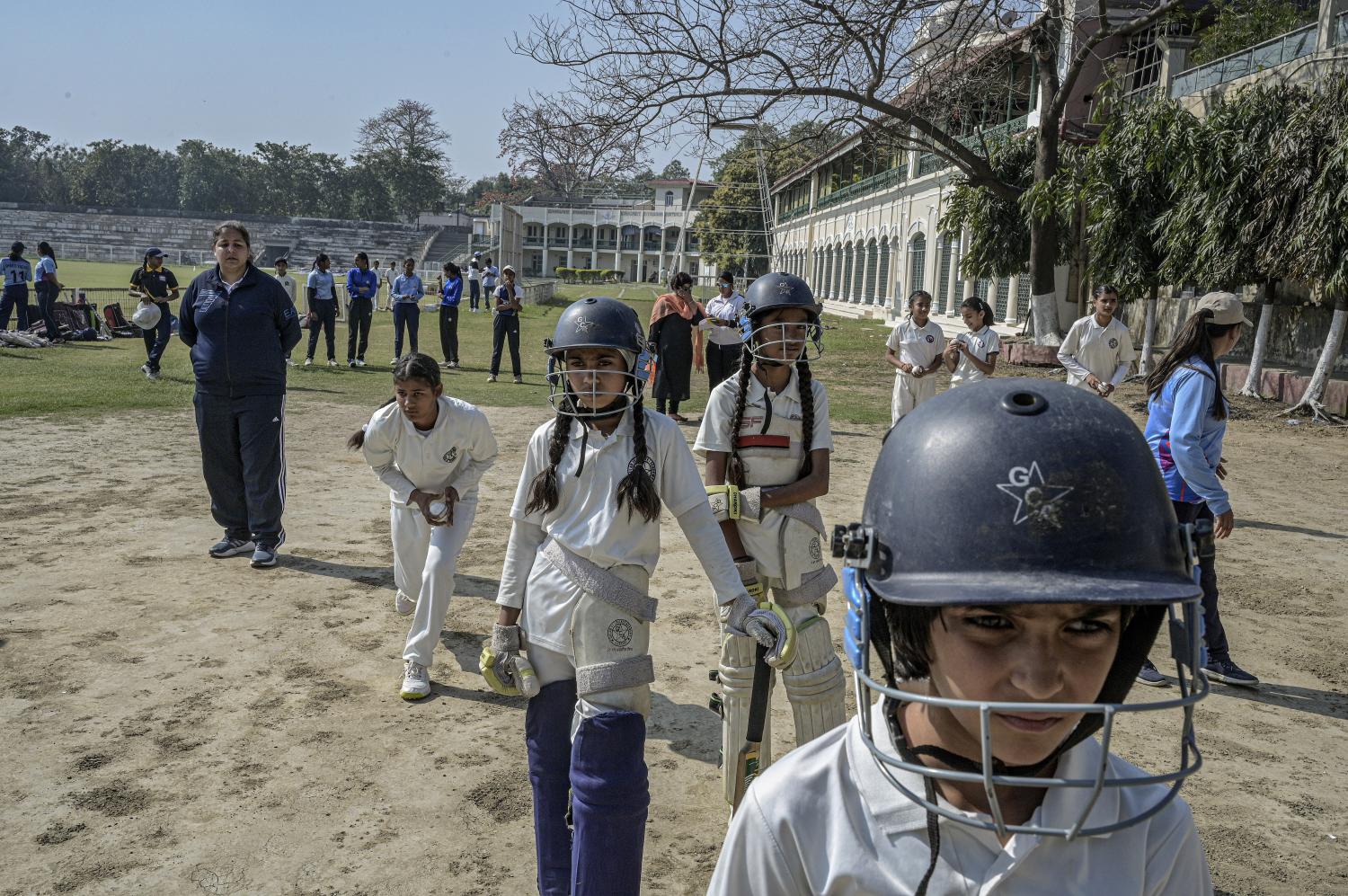
The girls go through their drills as recruiters watch. THE NEW YORK TIMES/Atul Loke
A majority of the players who have made it — running and diving on India’s cricket fields one day, appearing in ads for luxury cars, jewellery and sunscreen the next — come from villages and small towns. The girls in Punjab know this well because one of the most famous of them, Harmanpreet Kaur, is a local legend from their home state.
Last month, as the women’s league kicked off in Mumbai, Ms Kaur, 34, walked out to fireworks in the buzzing stadium, flanked by the captains of the other four teams. For years, she has been the captain of India’s national team.
She embodies this moment’s transformative potential for women’s sports. Ms Kaur has risen to the heights of cricket only because a coach identified her talent in high school and let her practise with the boys — there were no girls’ teams in her area. Eventually, she said in an interview, he built a girls’ team around her.
Even after she had become a fixture on the women’s national team, she had to keep looking for side jobs. She found part-time work far away from home, at Indian Railways in Mumbai. The contrast was deflating: representing India on the global stage, then returning to a junior clerk job, carrying documents between offices at a crowded train station.
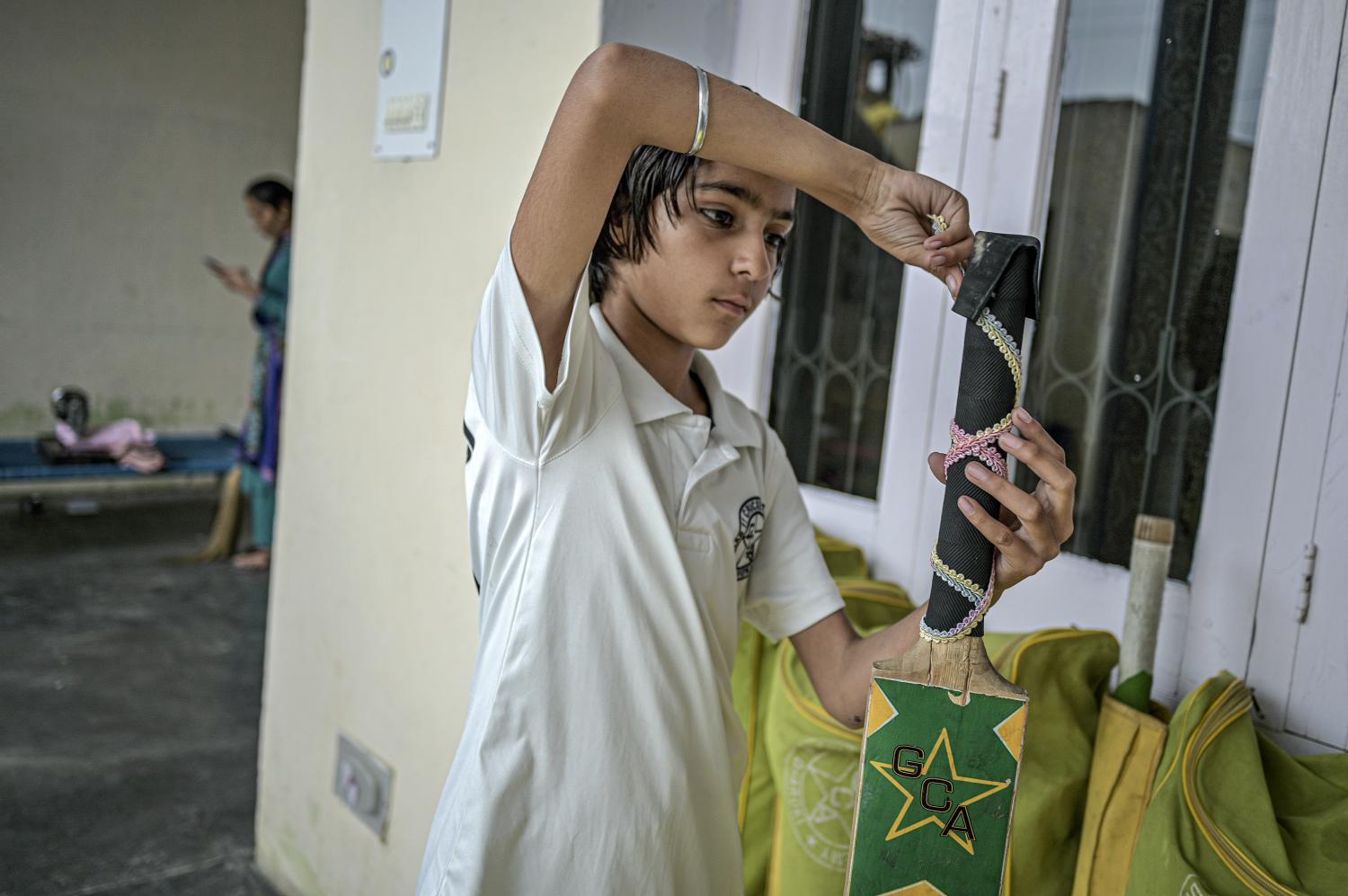
Harsimrat decorates her cricket bat handle with lace before going to practise in Patiala. THE NEW YORK TIMES/Atul Loke
Her routine was gruelling, with hours of practice before and after work, and hours on the train rushing from place to place.
“Many of my friends, they left cricket,” Ms Kaur said. “At some point, they had to choose one — cricket or office life.”
Women’s cricket suffered from indifference until 2006, when India’s cash-rich governing board for the sport finally took it under its wing. But only recently, after a string of successful performances by the national women’s team on the international stage, did the board invest in earnest in layers of district and state competition for female players.
Cricket experts say that the turning point was the World Cup in 2017 in England, when India lost a heartbreaking final but Ms Kaur had a star turn. Her performance was so dominating and drew such wide attention on television and social media that one cricket commentator declared: “Harmanpreet smacked women’s cricket into lounge rooms.”
In recent years, contracts from the board that oversees Indian cricket, and efforts to reach pay parity between men and women, have brought some financial security for national team players. Now, with the advent of the women’s professional league, India will need to develop a female talent pool up and down the country.
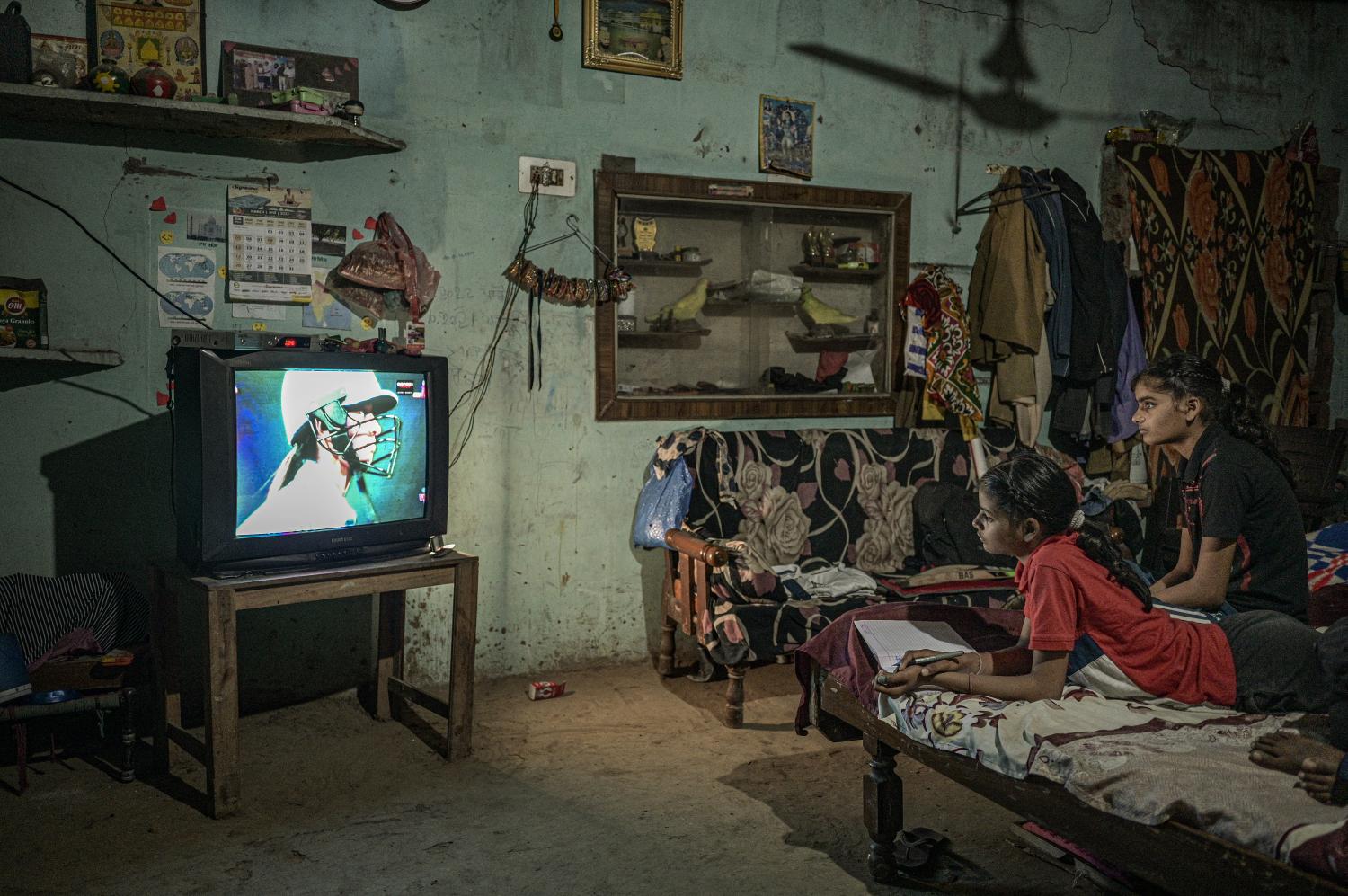
Naina and her sister Sunaina watch Harmanpreet Kaur in action during a Women’s Premier League cricket match from their home in Dharoki. THE NEW YORK TIMES/Atul Loke
“The young girls who haven’t gotten enough chances — for them this is a great platform,” Ms Kaur said before the league’s opener.
That match, which included colourful song and dance performances, drew a crowd of about 20,000 people. One of the spectators was Ishita Dave, who works in Mumbai’s film industry.
Ms Dave noticed that the stadium announcer did not call out Ms Kaur’s name as she walked out to bat — none of the hype-building that routinely introduces a male player of her stature. But as Ms Kaur belted the ball around the stadium, Ms Dave and two of her friends stood up to start a chant: HAR-MAN-PREET! HAR-MAN-PREET!
Initially, their enthusiasm drew quizzical looks from the largely male crowd. But by the end of the match, even the announcer was joining in: HAR-MAN-PREET! HAR-MAN-PREET!
“It will eventually catch up — it will have to,” Ms Dave said about the rise of the women’s game. “Lots of us will make sure that it does.”
As Ms Kaur led her team to victory after victory in Mumbai, as she received accolade after accolade and check after check, the girls in the village of Dharoki were watching.

A girl refines her batting technique during a village practice session on March 24. THE NEW YORK TIMES/Atul Loke
They included two sisters, Naina and Sunaina, ages 13 and 12, both members of the cricket team. Both of their parents are sweepers — their father works as a sweeper at the private school in the village, and their mother sweeps the houses of five different families. The family share a one-bedroom on a second floor, which they reach by climbing a rickety ladder. Downstairs, there is storage only for the girls’ bicycles, which they use to get to school and to practise. When it rains, a corner of their room drips.
When Women’s Premier League games were on television, the sisters would return from their own cricket practice, change into comfortable clothes and bundle up with their father on the bed to catch the action on their small Samsung television, as their mother prepared dinner on the stove on the balcony.
Naina and Sunaina can list the best players, which teams they play for. And, as easily: the handsome sum — exceeding $400,000 at the very top — that each is paid for not even a month’s play.
Promise
The girls’ cricket team in Dharoki started with a vow that its manager, Mr Shergill, made from the roof of a house long run by women.

Naina and her sister Sunaina on their way to school in Dharoki. THE NEW YORK TIMES/Atul Loke
His mother and two sisters farmed their land and raised him after his father died of a heart attack when Mr Shergill was 6. When he finished his studies, he helped sell his family’s farm produce in other states while trying his luck repeatedly at the police entrance exam.
On one of his trips to the state of Gujarat, he saw a cricket training facility in a village — the sport is mostly played in ad hoc spaces in India — and thought: If they can do it, why can’t we? If he got the police job, he pledged, he would spend a good chunk of his salary on building a team.
It began with tossing balls at his own daughter, Harsimrat, his only child, on their rooftop when she was 6. When the Covid lockdown shut schools, the number of girls on the rooftop increased. So did the number of balls landing in the neighbour’s house.

Naina and her sister Sunaina prepare to leave for school at their home in the village of Dharoki, Punjab, India. THE NEW YORK TIMES/Atul Loke
Mr Shergill at first erected nets around the roof. Then he carved out a corner of the family’s wheat fields and dedicated himself to managing the team three years ago.
“We don’t know what got under him,” his sister, Ms Jasvir, said with a smile.
The household expenses are largely covered by his wife’s earnings as a government clerk, supplemented by the farm’s income. Much of Mr Shergill’s monthly salary of about $600 goes to jerseys and equipment, food and fuel. He pays a part-time coach to do the technical training.
He is sensitive to the fact that his players come from diverse financial backgrounds. He provides the same shoes for all. The batting equipment is shared. Everyone’s tiffin has the same food on travel days. The last thing a child needs is a taunt: that her shoes were donated while others came with shoes bought by their parents.
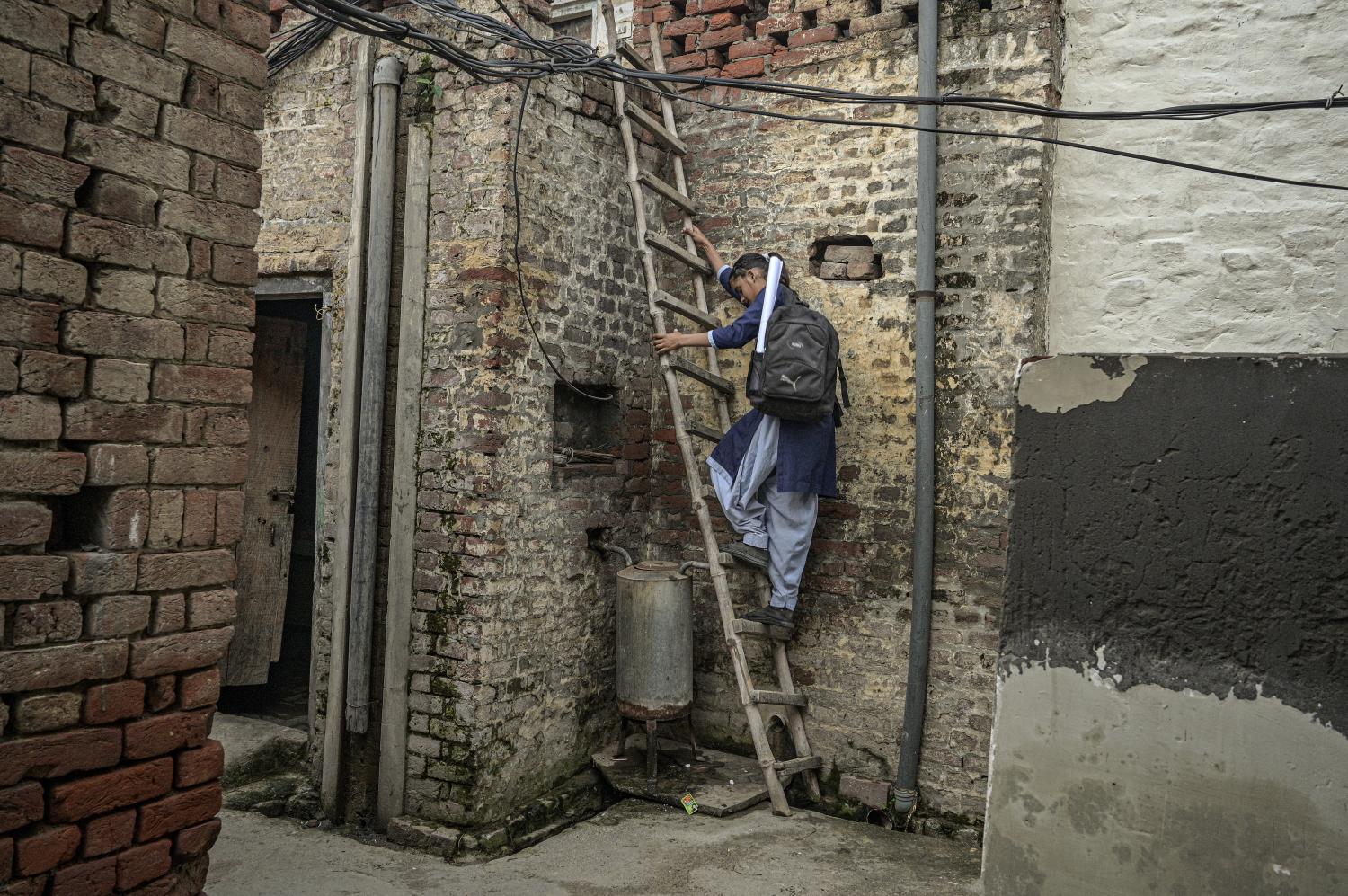
Sunaina leaves for school from her home in Dharoki. THE NEW YORK TIMES/Atul Loke
Beyond the daily practice, Mr Shergill is obsessive about finding exposure opportunities for his players — and every time, he makes clear that cricket is just a vehicle.
He has managed to get passports for all of his players — he keeps them, with copies of their school certificates and citizenship IDs, safe at home. For more than a dozen of them, he can recall their birthdays off the top of his head.
Last September, the team travelled to Mohali, about 80km from the village, to watch the Indian men’s national team play Australia. Mr Shergill’s sister and wife baked 60 rotis, two for each girl and a few for the adults, and cooked some vegetables, packing all the food and water into one bag. They and his mother chaperoned the girls.
The team arrived early at the stadium. “Everyone sees the match,” Mr Shergill said. “We were there to see them practise.”
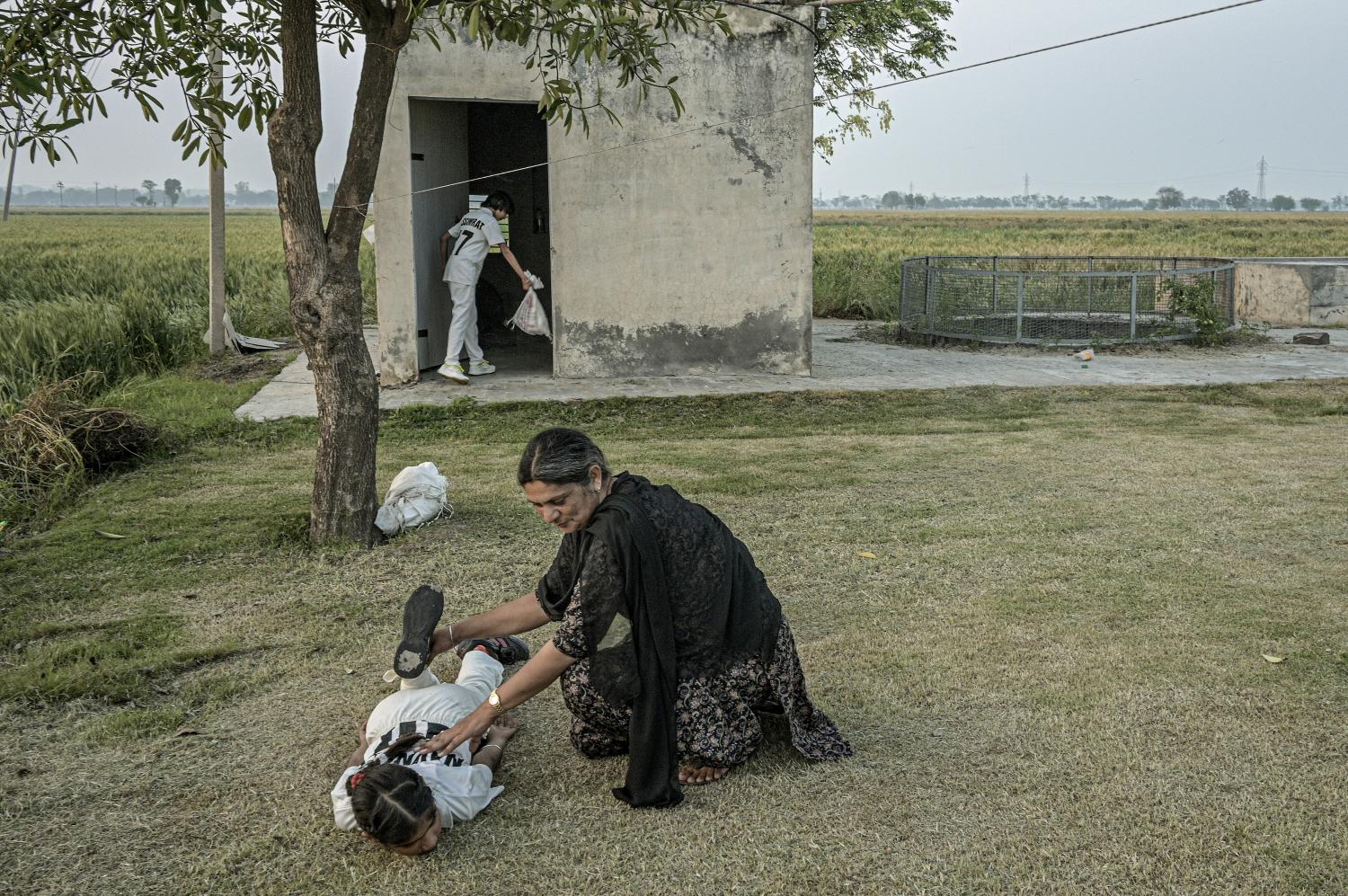
Jasvir Kaur helps a girl suffering from leg cramps during practice for the girls’ cricket team her brother manages in Dharoki. THE NEW YORK TIMES/Atul Loke
After the match, when the VIPs had gone home, Mr Shergill took the girls on a tour of their section of the stands. As the girls enjoyed the comfort of chairs marked with the names of dignitaries, Mr Shergill made a video of them.
“This child — she is sitting in the chief minister of Punjab’s seat!” he says in the video as he moves the camera down the line, the pride and joy clear in his voice. “Karandeep Kaur — in the chair of Honourable Justice Ravi Shanker Jha! Naina, in the chair of Harbhajan Singh, member of parliament!”
This is what it looks like to chip away at India’s rigid gender divide. The girls walk and talk with the kind of confidence and ease that come with familiarity with things beyond one’s immediate life, with travel and exposure. They have seen the cities, they have eaten in restaurants, they have sat in the front rows of stadiums with cameras pointed their way.

The girls work on their batting at local nets. THE NEW YORK TIMES/Atul Loke
Back home, their daily routine — two dozen girls challenging themselves out in the open, enjoying themselves — has become just another part of village life. Their presence feels as rooted as the peepal tree that shades the bench where Grandma Kaur sits to watch the drills as she snaps green beans for dinner.
But it is also building towards something bigger, something beyond the village.
One morning in late March, Mr Shergill and his team arrived at the cricket ground in the city of Patiala, where recruiters were shortlisting players for the district’s under-15 squad. Selection to this team is the only way the girls get a significant opportunity to play in competitive matches and put themselves on the sport’s official radar.
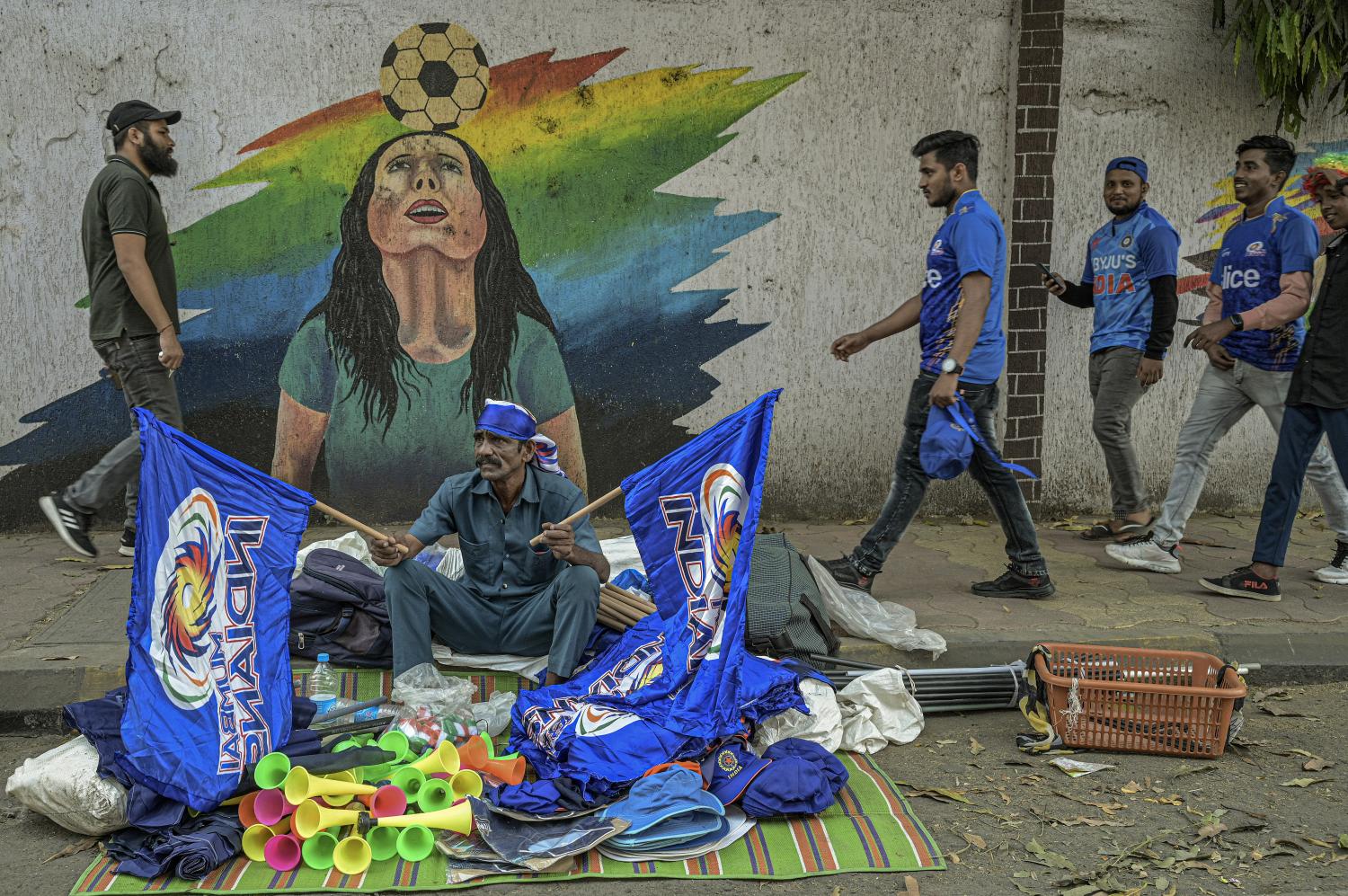
Street vendors sell flags and noisemakers before the first Women’s Premier League cricket match in Navi Mumbai, India. THE NEW YORK TIMES/Atul Loke
Three women, all former state-level players, kept a watchful eye and made notes. As the girls went through their drills — taking their turn batting, running in to show their bowling skills — Mr Shergill sat in the shade of a tree and filled out their paperwork.
At the end of the session, the recruiters told Mr Shergill that five of his players would most likely make the team. (Days later, over the phone, they told him that seven had been selected.)
After the trial, the team walked to a nearby restaurant. Sitting around a long table, the girls pulled out their tiffins and water bottles and had their lunch. Then, a small cake arrived: It was 12-year-old Jasmin’s birthday. The girls sang together and fed each other cake. Then, in their white uniforms, they filed out of the restaurant to catch the bus back to the village.

Members of Gulab Singh Shergill’s team celebrate the birthday of a player, Jasmin Kaur, after participating in tryouts in Patiala, India. THE NEW YORK TIMES/Atul Loke
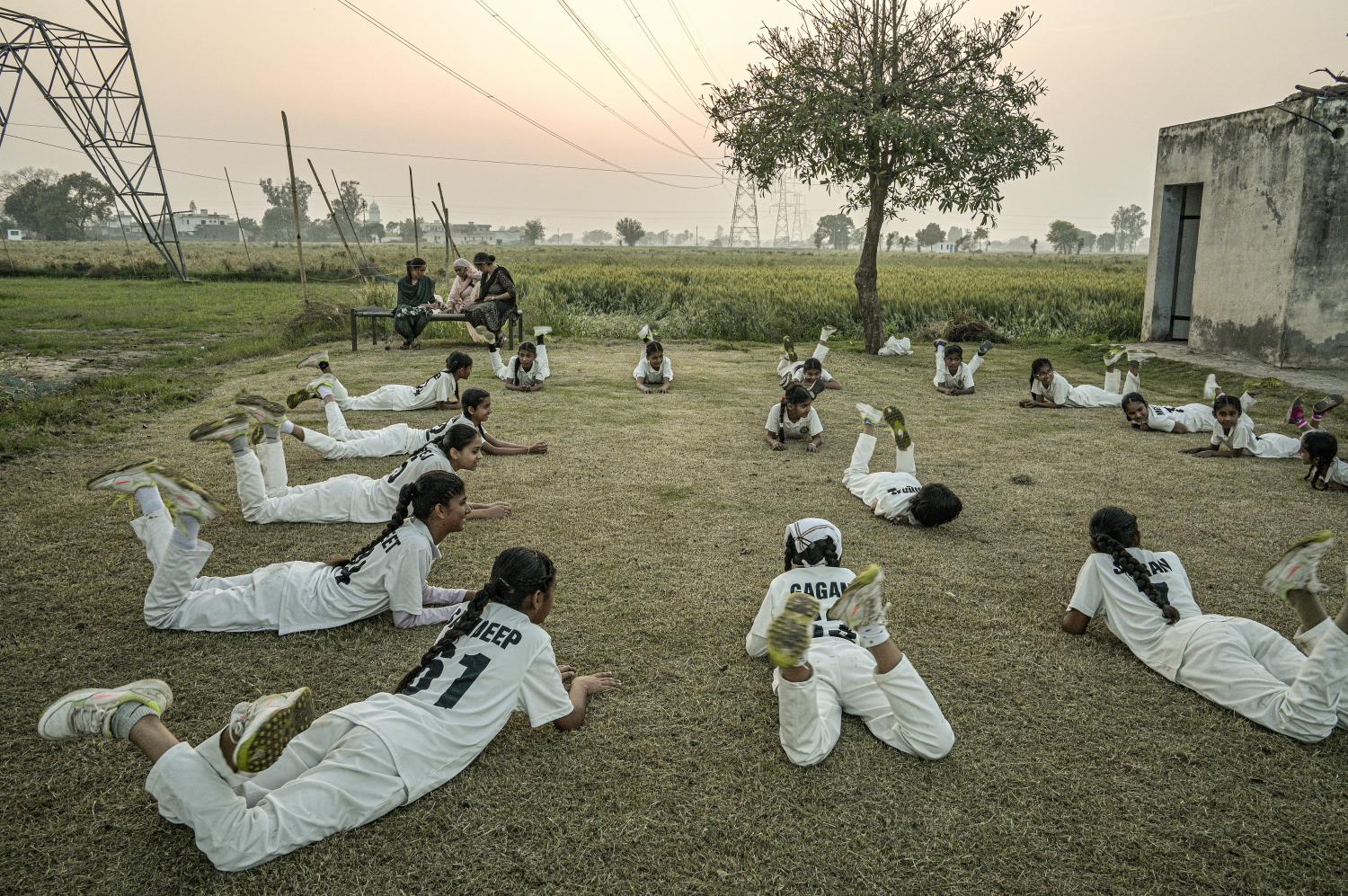
The players cool down and snap beans ahead of dinner in the village of Dharoki. THE NEW YORK TIMES/Atul Loke

At the end of the recruitment session at the cricket ground in Patiala, India, players pose for selfies as they wait for their parents to pick them up. THE NEW YORK TIMES/Atul Loke

Team members warm up before the selections. THE NEW YORK TIMES/Atul Loke
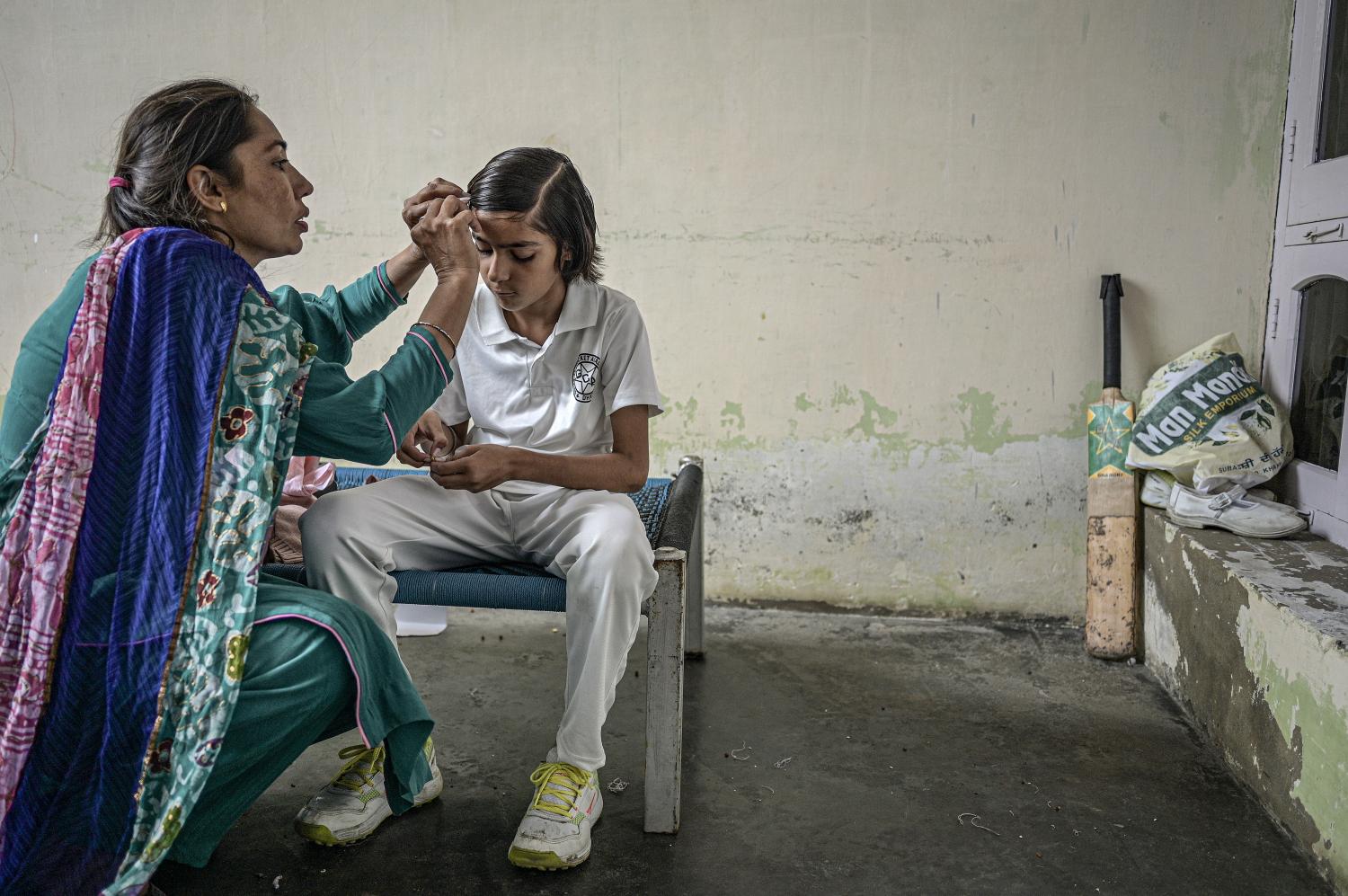
Gulab Singh Shergill’s wife, Kamaldeep Kaur, a government clerk, readies their daughter, Harsimrat, for practice in Patiala. THE NEW YORK TIMES/Atul Loke





